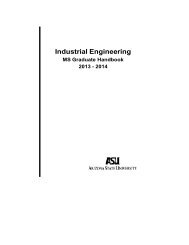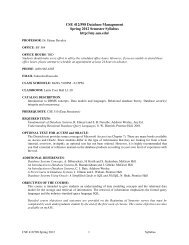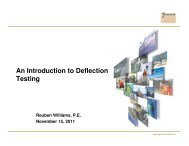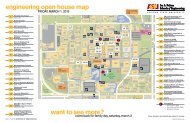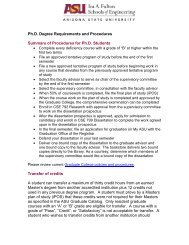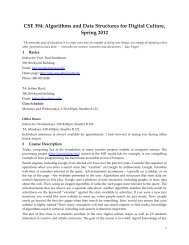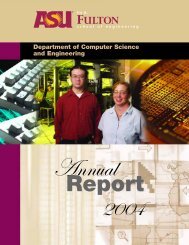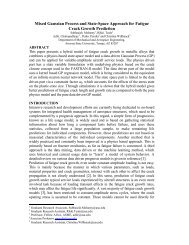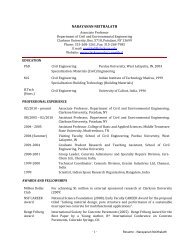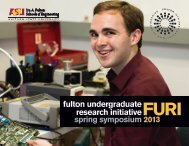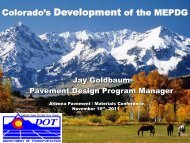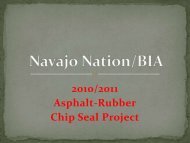Abstract Book - Ira A. Fulton Schools of Engineering - Arizona State ...
Abstract Book - Ira A. Fulton Schools of Engineering - Arizona State ...
Abstract Book - Ira A. Fulton Schools of Engineering - Arizona State ...
You also want an ePaper? Increase the reach of your titles
YUMPU automatically turns print PDFs into web optimized ePapers that Google loves.
Apparatus for Testing Grip Control Algorithms <strong>of</strong> Artificial Hands<br />
Chad W. Ripley, Mechanical <strong>Engineering</strong><br />
Graduation: December 2010 Hometown: Arlington, Texas<br />
Mentor: Dr. Veronica Santos, Mechanical and Aerospace <strong>Engineering</strong><br />
Grand Challenge: Biological and human systems<br />
Researchers are developing control algorithms for artificial hands, in conjunction with novel tactile sensor arrays,<br />
to improve grip control by replicating the reflex-like grip response patterns <strong>of</strong> human hands. In order to test<br />
and improve these algorithms, an apparatus has been developed to impose repeated rotational perturbations<br />
on objects grasped by an artificial hand. A MATLAB graphics user interface allows the user to specify a force<br />
pr<strong>of</strong>ile that is imparted to the grasped object using pulleys, cables, and stiff springs. Future work will include<br />
autonomous repetition <strong>of</strong> perturbation conditions.<br />
Canopy Trek<br />
Shane Sandler, Mechanical <strong>Engineering</strong><br />
Graduation: May 2011 Hometown: Phoenix, <strong>Arizona</strong><br />
Mentor: Dr. Winslow Burleson, Computer Science <strong>Engineering</strong><br />
Grand Challenge: Engineer the tools <strong>of</strong> scientific discovery<br />
Canopy Trek intends to help raise awareness <strong>of</strong> forest canopy climate with an automated sensing robot. Continued<br />
development on the robot from last semester includes a redesigned descent mechanism. Additionally, full rebuilding<br />
<strong>of</strong> the robot has begun allowing for the descent to be dialed in and tested. Soon, the robot will be finished so that<br />
it can be tested and deployed full-scale.<br />
Development <strong>of</strong> Cell Culture in the Lizard Species Anolis carolinensis<br />
Jonathan Sankman, Bioengineering<br />
Graduation: May 2012 Hometown: Phoenix, <strong>Arizona</strong><br />
Mentor: Dr. Michael Kaplan and Dr. Kenro Kusumi, Bioengineering and<br />
School <strong>of</strong> Life Sciences<br />
Grand Challenge: <strong>Engineering</strong> the tools <strong>of</strong> scientific discovery<br />
The development <strong>of</strong> cell culture in Anolis carolinensis is vital for understanding the mechanisms responsible for tail<br />
regeneration in lizards. Preliminary culture tests performed with mouse myoblasts (C2C12 from ATCC) have been<br />
conducted. Cells were grown in Dulbecco’s Modified Eagle Medium (DMEM) with 10% fetal bovine serum (FBS).<br />
The cells were differentiated into myocytes using DMEM with 2% horse serum for a period <strong>of</strong> five days. Results<br />
confirmed that the cells had morphological features characteristic <strong>of</strong> myocytes. Future research will involve the<br />
isolation <strong>of</strong> specific cell lines from Anolis carolinensis to enable the functional analysis <strong>of</strong> the regenerating lizard<br />
tail.<br />
Spring 2010 29



